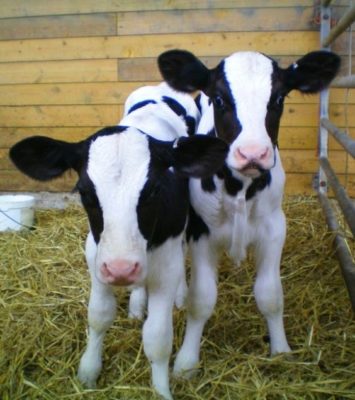Benefits of Colostrum Pasteurisation
4 February 2019Many disease causing organisms can be transmitted to calves via colostrum feeding, such as Mycoplasma, Listeria, E.coli, Salmonella and perhaps most importantly, the bacteria that causes Johne’s disease (Mycobacterium avium paratuberculosis or MAP).
Pasteurisation is the process of heating colostrum (or milk) to a certain temperature for a specific time to reduce the bacterial load. It is important to bear in mind that pasteurisation is not the same as sterilisation. It will greatly reduce bacterial numbers, but will not eliminate them completely. There is also no guarantee that pasteurisation kills MAP bacteria and though the process will greatly reduce their numbers, there is still a small risk of MAP bacteria surviving and infecting the calf.
Pasteurisation can reduce the immunoglobulin or antibody levels (in the region of about 10%) and so only good quality colostrum should be pasteurised (ideally over 60g/L IgG). Any colostrum which contains clots, blood or excessive amounts of bacteria (contamination with dirt/faeces) will still be a risk for bacterial transmission to the calf, as not all disease causing bacteria will be killed.
The standard recommendation for many of the commercially available pasteurisers is to heat colostrum for 60 minutes at 60˚C. Cleaning and maintenance of the equipment is important, especially to ensure that the correct temperature and timing is adhered to. Above 62˚C, levels of antibodies are significantly reduced and colostrum can thicken and coagulate, making it more difficult to feed. This can lead to calves being more susceptible to scours and failure of passive transfer of immunity.
Research has shown that pasteurising colostrum can reduce morbidity (calves being ill) and mortality rates in calves during the first 3 weeks of life (Armengol and Fraile 2016). A Spanish study on one farm involving 587 Holstein calves looked at morbidity and mortality rates in one group of calves (143 males and 144 females) fed unpasteurised frozen colostrum (6–8 L during the first 12 h of life) and then onto whole milk. The second group (150 males and 150 females) were fed the same levels of pasteurised colostrum and whole milk. All calves were blood sampled within 2 to 5 days to assess serum total protein (g/dL) as a measure of passive transfer of antibodies.
Both colostrum and milk were tested for bacteria levels (cfu/mL) and calves were clinically examined every 24 hours until 3 weeks of age for signs of ill health. Bacterial levels for both colostrum and milk were reduced between 1 and 2 log10 with pasteurisation.
Pasteurisation of colostrum and milk significantly reduced morbidity and mortality rates in calves compared to those receiving unpasteurised colostrum and milk during the first 3 weeks of life, even when appropriate colostrum ingestion took place (see table below):
| Unpasteurised Group | Pasteurised Group | |
|---|---|---|
| Average Serum Total Protein g/dL | 7.27 | 7.34 |
| Range | 5.8 - 9.2 | 5.8 - 9.0 |
| Mortality % | 6.5 | 2.8 |
| Morbidity % | 15.0 | 5.2 |
The table shows that while the serum levels of total proteins in both groups was very similar, the lower levels of bacteria in the pasteurised colostrum/milk helped improve calf health and survival. In particular, neonatal calf diarrhoea showed a reduction in incidence compared to respiratory disease with pasteurisation.
Reference: Armengol, R. and Fraile, L. 2016. Colostrum and milk pasteurisation improve health status and decrease mortality in neonatal calves receiving appropriate colostrum ingestion. Journal of Dairy Science, 99 (6): 4718-4725.
Lorna MacPherson, lorna.macpherson@sac.co.uk
Sign up to the FAS newsletter
Receive updates on news, events and publications from Scotland’s Farm Advisory Service

